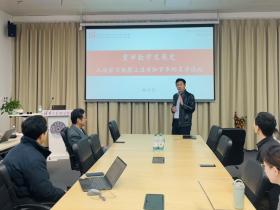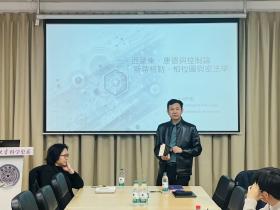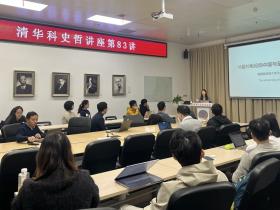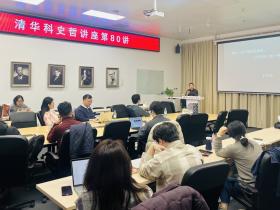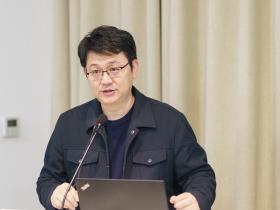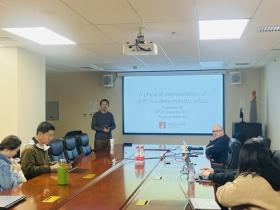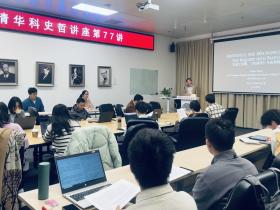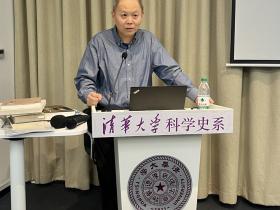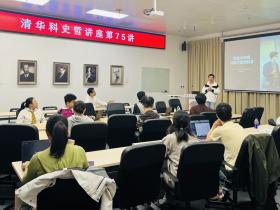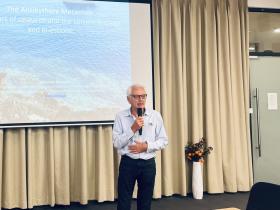On December 13, 2024, THU History and Philosophy of Science Lecture Series No. 85 was held in Room B206 of the Humanities Building. This lecture was delivered by Associate Professor Jin Shixiang from the Institute for the History of Science and Technology & Cultural Heritage at the University of Science and Technology Beijing, and hosted by Associate Professor Shen Yubin from the Department of History of Science at Tsinghua University.
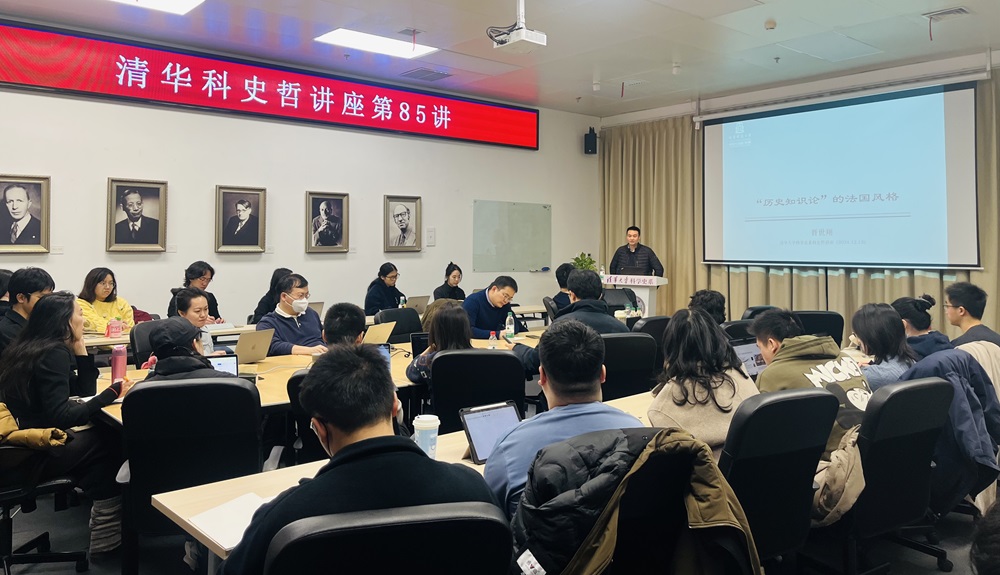
At the beginning of the lecture, Professor Jin first introduced the overall structure of the content. "Historical epistemology" as an important method in the study of the history of science and technology has not only been deeply employed as a guiding method at the German "Max Planck Institute for the History of Science," but the work of the "Institut d'histoire et de philosophie des sciences et des techniques" at Paris 1 Panthéon-Sorbonne University since its establishment in 1932 is also a significant practice of this method. Among these, the specific use by Georges Canguilhem (1904---1995) in Le normal et le pathologique (1966), and the advancements by his students Simondon, Deleuze, and Foucault in different fields are representative. At the end of the lecture, Professor Jin also used the "loose teleology" embodied in the traditional wooden structures of Jiangnan and their incompleteness, as well as the enduring view of time centered on "climate" and "phenology" reflected in the "Diagrams of Gua Qi Directing the Days," as cases to present the possibility of a correspondence between the theory and practice of historical epistemology.
The lecture was introduced through the famous "Davos Debate" of the 1930s. In 1927, Heidegger and Cassirer, representing Neo-Kantianism, engaged in a debate in Davos, Switzerland, concerning research methods for the history of scientific thought under the guidance of universal history. Heidegger, in his early period, fiercely criticized the Neo-Kantian transcendental epistemology and the methodology for the history of ideas represented by Cassirer. Professor Jin used this as a clue to gradually introduce French research on the history of scientific thought, as well as the research program in the history of science and technology practiced by the Institut d'histoire et de philosophie des sciences et des techniques in France, represented by Bachelard, Canguilhem, and others—historical epistemology.
Understanding an obscure passage in From the Closed World to the Infinite Universe is key to entering the problem. At the outset of his representative work, Koyré points out that the 17th-century Scientific Revolution is "both the root and the fruit" of modern science and philosophy. How exactly should this statement be understood? Professor Jin believes this is an embodiment of teleological metaphysics in historical research, namely: teleology functions a priori and anti-temporally at the origin and beginning, playing a guiding role. Therefore, the history of science research represented by Koyré is a paradigm of teleological history of ideas. This is a method that places "modern science" within the development of a priori concepts, tracing back to its origins of "intelligibility." Starting from the current understanding of "science," it traces back to its historical source, then deduces the present from the beginning. This method was vividly compared by Husserl to a "zigzag" retrospective study of scientific thought.
A clearer expression of the above approach comes from Cassirer, a representative figure of Neo-Kantianism and the editor of Kant's Collected Works. Cassirer believed that research in the history of ideas and cultural history is the historicization of Kantian transcendental epistemology. However, he and Heidegger had serious disagreements regarding the interpretation of Kant's thought. Kant and the Problem of Metaphysics, published in 1927, is a record of the Davos debate. In it, Heidegger emphasized that the completion of "reason" in human history should not be seen as "freedom," meaning: Cassirer's so-called "terminus a quo (starting point)" and "terminus ad quem (end point)" do not exist. Heidegger himself was concerned with a beginning point not in the sense of universal history—the horizon of the unfolding of Dasein's existence. Knowledge is a practical activity within the existential horizon of Dasein. Correspondingly, the French version of historical epistemology can also be seen as a certain breakthrough against historicized transcendental epistemology.
The history of the Institut d'histoire et de philosophie des sciences et des techniques (IHPST) can be divided into four periods: the tenures of the first three directors—Abel Rey (1932---1940), Gaston Bachelard (1940---1955), and Georges Canguilhem (1955---1971)—and the period from 1971 to 2001, from Canguilhem's retirement to the institute's merger with the Centre national de la recherche scientifique (CNRS). Among these, the first director, Abel Rey, was the earliest to propose the "historical epistemology" research method; subsequent directors Bachelard and Canguilhem both promoted this research. The subsequent lecture mainly unfolded along the lines of Canguilhem's work in Le normal et le pathologique and the developments and enrichments by his students.
Le normal et le pathologique was Canguilhem's doctoral thesis completed in 1943. Over the next twenty years of research, several articles were added, and it was republished in 1966. If traditional history of ideas understands the development and evolution of knowledge from the standpoint of human intellect or rational concepts, then Canguilhem's work aims to shift the entire perspective and object of inquiry. He expands or sinks the concept of knowledge to the level of the "living body." Le normal et le pathologique examines knowledge of the body and life, proposing the "living body" marked by "individual normativity" to replace the traditional epistemological object centered on the "cognizing subject." This, from the very beginning, extends the metaphysical definition of knowledge concerning the subject to the dimension of existence and being.
Considering the background of Le normal et le pathologique, after the Nazis came to power in 1933, they used physical anthropological body measurement methods to typologically classify human bodies, thereby demarcating superior and inferior people. Canguilhem aimed to oppose this quantitative cognition of the human body based on statistical significance. Taking the discovery by Claude Bernard, the founder of experimental physiology, that established 3~4% as the "normal" blood sugar content as an example, Canguilhem questioned this approach of defining "normal" and "pathological" by statistical quantification standards. He argued that health charts are an external norm, a "moral statistics" in the sense of cognitive analysis. He himself placed greater emphasis on the dynamic regulatory capacity inherent to the body itself, i.e., an internal, polarized normativity. Moreover, Le normal et le pathologique not only focuses on organisms represented by the human body but also incorporates non-humans into the object of thought. That is, after reducing the "cognizing subject" to the "living body," Canguilhem further de-anthropocentrizes, examining the "living individual."
Unlike Descartes who defined matter and body as extension, the living individual has no definite shape. The morphological changes of the living individual concern not only the relationship between a specific environment and the individual but, more importantly, evolution over generational time. Continuing Bergson's stance, Canguilhem points out that the evolution of life itself is generalization. Generalization is not merely the ability of intellect and abstract cognition; it is also the selection and neglect exhibited by cells at the level of life. Based on this, he redefined the ancient meaning of "logos": information inscribed, maintained, and transmitted within the living being. This allowed him, standing on the evolutionary time dimension, to view "error" as an opportunity enabling the maintenance and preservation of life, thereby thoroughly liquidating natural teleology.
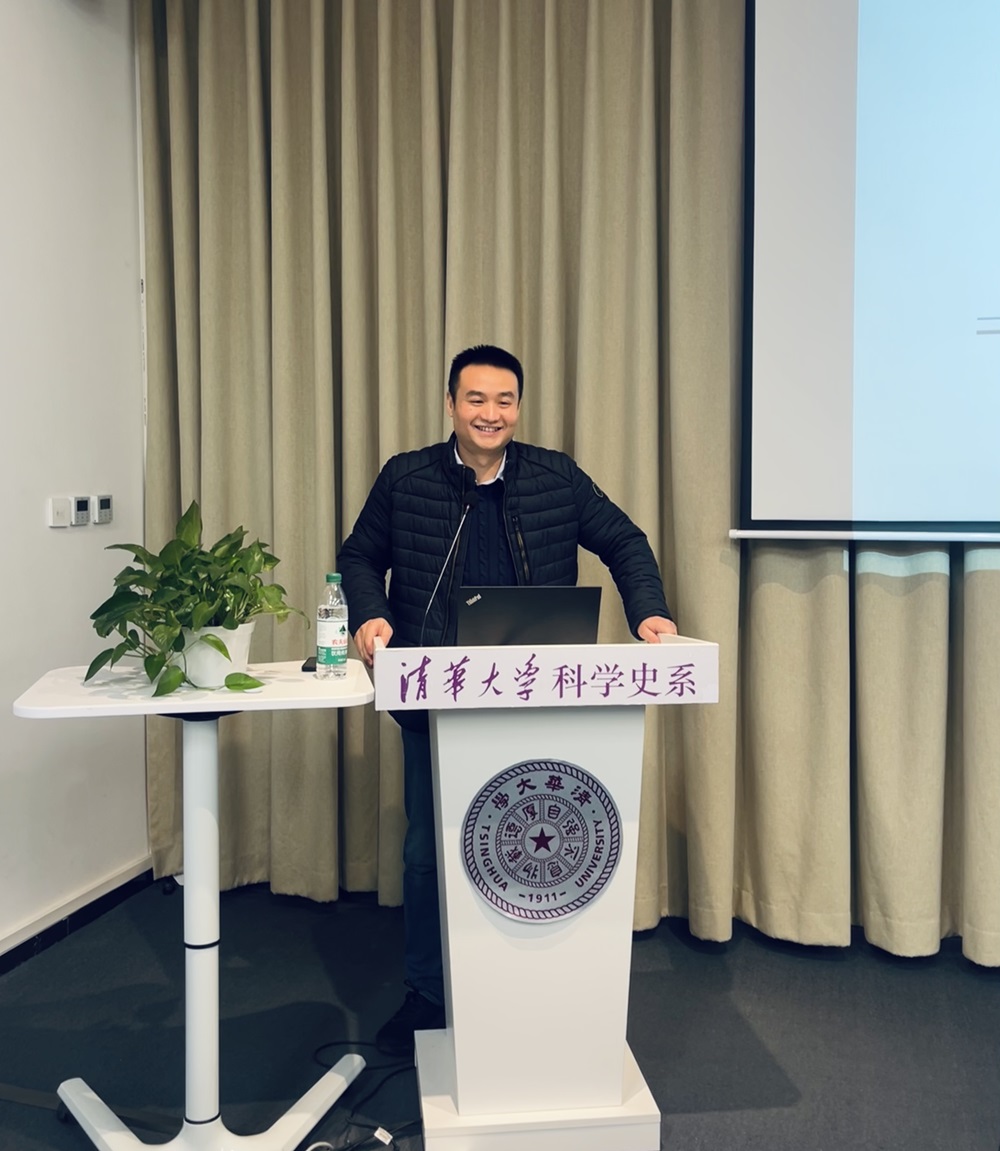
After detailing the groundbreaking contributions of Le normal et le pathologique, Professor Jin briefly introduced the progress and achievements made by Simondon and others respectively in the fields of natural philosophy, metaphysics, and history. French research in historical epistemology can be summarized as a continuous effort to reconstruct a metaphysics centered on becoming, with immanence as its aim, after pruning all forms of teleology. The appropriation and interpretation of Spinoza and Nietzsche by Deleuze and Foucault can be contextualized and understood within this problem trajectory.
During the Q&A session, Professor Jin actively interacted with faculty and students from the Department of History of Science at Tsinghua University, as well as teachers and students from institutions including the University of Science and Technology Beijing, Renmin University of China, the Institute for the History of Natural Sciences (Chinese Academy of Sciences), Beijing Normal University, and Inner Mongolia Normal University, engaging in thorough exchanges on the lecture's themes. The entire lecture concluded smoothly in a warm atmosphere.
Written by: Zhao Yuhan
Reviewed by: Jin Shixiang


